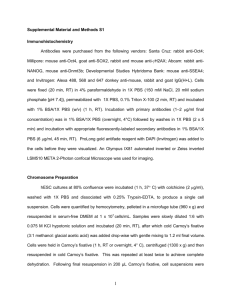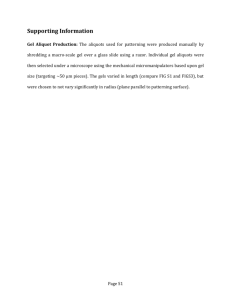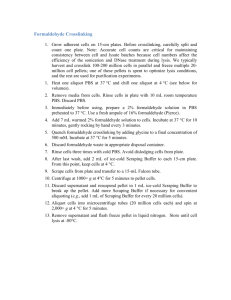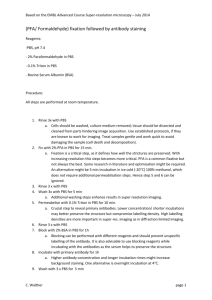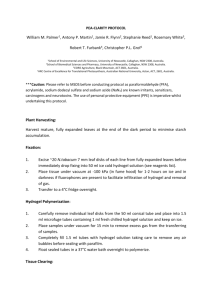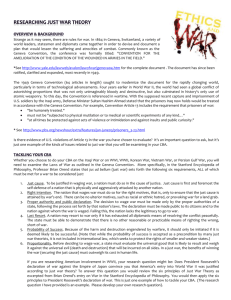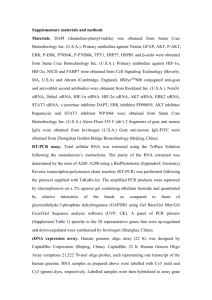PEG-MAL_Hydrogel_protocol
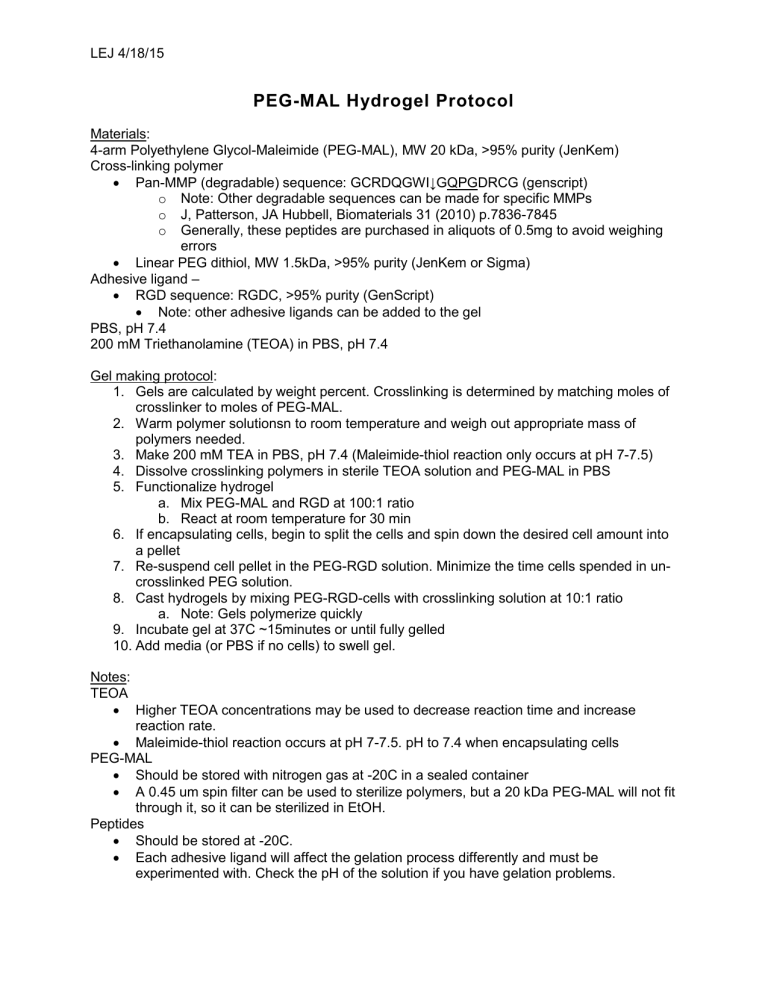
LEJ 4/18/15
PEG-MAL Hydrogel Protocol
Materials:
4-arm Polyethylene Glycol-Maleimide (PEG-MAL), MW 20 kDa, >95% purity (JenKem)
Cross-linking polymer
Pan-MMP (degradable) sequence: GCRDQGWI↓GQPGDRCG (genscript) o Note: Other degradable sequences can be made for specific MMPs o J, Patterson, JA Hubbell, Biomaterials 31 (2010) p.7836-7845 o Generally, these peptides are purchased in aliquots of 0.5mg to avoid weighing errors
Linear PEG dithiol, MW 1.5kDa, >95% purity (JenKem or Sigma)
Adhesive ligand –
RGD sequence: RGDC, >95% purity (GenScript)
Note: other adhesive ligands can be added to the gel
PBS, pH 7.4
200 mM Triethanolamine (TEOA) in PBS, pH 7.4
Gel making protocol:
1. Gels are calculated by weight percent. Crosslinking is determined by matching moles of crosslinker to moles of PEG-MAL.
2. Warm polymer solutionsn to room temperature and weigh out appropriate mass of polymers needed.
3. Make 200 mM TEA in PBS, pH 7.4 (Maleimide-thiol reaction only occurs at pH 7-7.5)
4. Dissolve crosslinking polymers in sterile TEOA solution and PEG-MAL in PBS
5. Functionalize hydrogel a. Mix PEG-MAL and RGD at 100:1 ratio b. React at room temperature for 30 min
6. If encapsulating cells, begin to split the cells and spin down the desired cell amount into a pellet
7. Re-suspend cell pellet in the PEG-RGD solution. Minimize the time cells spended in uncrosslinked PEG solution.
8. Cast hydrogels by mixing PEG-RGD-cells with crosslinking solution at 10:1 ratio a. Note: Gels polymerize quickly
9. Incubate gel at 37C ~15minutes or until fully gelled
10. Add media (or PBS if no cells) to swell gel.
Notes:
TEOA
Higher TEOA concentrations may be used to decrease reaction time and increase reaction rate.
Maleimide-thiol reaction occurs at pH 7-7.5. pH to 7.4 when encapsulating cells
PEG-MAL
Should be stored with nitrogen gas at -20C in a sealed container
A 0.45 um spin filter can be used to sterilize polymers, but a 20 kDa PEG-MAL will not fit through it, so it can be sterilized in EtOH.
Peptides
Should be stored at -20C.
Each adhesive ligand will affect the gelation process differently and must be experimented with. Check the pH of the solution if you have gelation problems.

